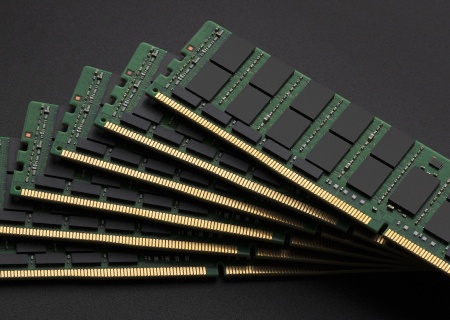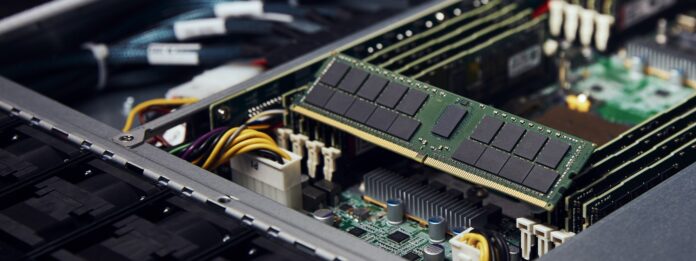Memory is an essential component of any system. Configuring it the wrong way can have a huge impact on your system and application performance.
Before you decide how to equip your server, what type of memory to use, and how much of each memory module to install, you need to understand the importance of the choices you make.
Otherwise, you may end up with disappointing performance, higher power consumption than expected, or even more serious problems, like the system not turning on at all.
The different types of memory technologies
The first thing to think about is compatibility. Mixing memory modules from different brands in the same memory bank can cause compatibility issues. If the wrong memory is installed or memory technologies are mixed, the system may turn on, but fail to boot to an operating system.
There are 3 main memory technologies available today: UDIMM (Unbuffered DIMM), RDIMM (Registered DIMM), and LRDIMM (Load Reduced DIMM). Even though these three memory technologies physically fit into your server’s memory slot, they CANNOT be mixed, as this will cause the system to fail at startup.
How to choose the right memory

UDIMMs, RDIMMs and LRDIMMs also come in different memory speeds. Current servers are compatible with DDR4 memory modules with speeds of up to 3,200 MT/s. However, this memory speed can vary and slow down depending on the processor model used but also the number of memory modules installed.
Think of it as a highway. Traffic needs to slow down when there are a lot of cars driving on the highway, otherwise there will be an accident. It’s the same principle with servers. When a large number of memory modules are installed, the system must slow down the memory frequency to be able to handle the greater amount of data traveling to and from the memory modules.
Another important check is to verify that you are following the platform and manufacturer’s memory installation guidelines. Today, there are many platforms with different memory channel configurations. Motherboards with four, six, and eight memory channels are available now, and motherboards with twelve memory channels will be available later this year. Kingston’s Memory Finder helps you choose a compatible part number, and also provides you with information about your system.
What to Consider When Setting Up Your Server
To achieve the best performance, it is important to install memory modules according to the platform architecture recommendations. This is called a balanced memory configuration. Failure to follow the platform’s memory channel configuration guidelines will result in loss of memory performance or an unbalanced memory configuration.
Many customers install low capacity memory modules in their servers. This approach presents some problems:
- Scalability: If you fill the server with low capacity memory modules, you will not be able to add more memory modules in the future. You will need to remove existing memory modules and purchase new ones to reach maximum capacity.
- Power consumption: Installing more memory modules will result in higher power consumption.
- Performance: Remember the highway example? Filling the server completely will most likely cause memory speed to drop.
Understanding the application is the key to success
Buying the cheapest option on the market is often not the most cost-effective approach when considering total cost of ownership. Really take the time to research your platform specifications, your upgrade options, and your application needs.
If your application requires large memory capacity, you will need to look into RDIMM and LRDIMM memory technologies. If your application is sensitive to memory bandwidth, you will need to consider the processor model installed and the number of memory channels present on your platform. If it is an eight memory channel platform, it is best to install the memory modules in groups of eight per processor for the best performance. Some platforms limit memory performance when modules are installed in the second bank, also called 2DPC (2 DIMMs per channel).
Finally, you can also consider installing dual-rank memory modules, as they offer better performance than single-rank memory modules.
The best memory partner for your solution
Kingston offers 3200 MT/s server memory modules . These are the fastest DDR4 memory modules currently, ahead of the arrival of DDR5 server memory later this year.
As you can see, upgrading your system is not as simple as you thought. This is why Kingston provides its customers with a FREE, tailor-made support service: “ Ask an Expert ”. Whether installing memory, SSD (Solid State Drive) or any other product, Kingston will help and provide you with advice and the best solution for your business needs.


